16+ Sensory Details Examples to Download
People experience the world around them in different ways that wholly revolve around the person’s senses and the ways their mind subjectively interprets the world. The best way to communicate one’s sensations and observations in text or speech to another person is through the utilization of sensory details.
1. Sensory Details Examples

mrbeland.weebly.com
2. Sensory Details Resources Final Update
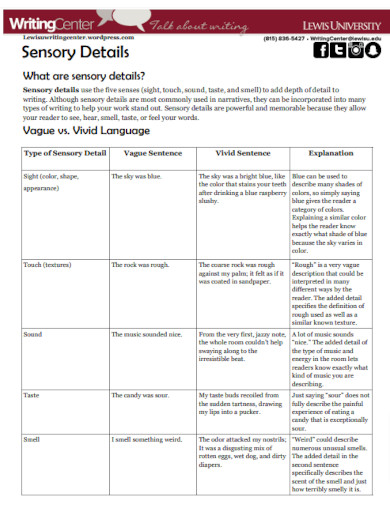
lewisu.edu
3. Sensory Details Word List Example
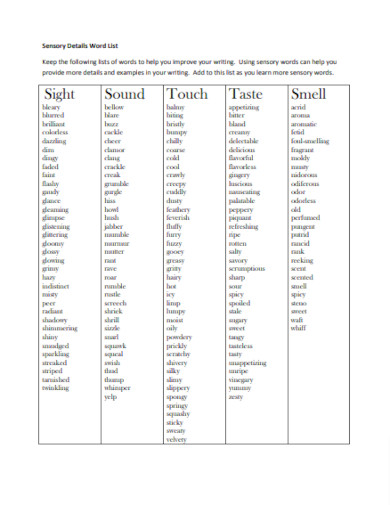
34kiwis.files.wordpress.com
4. Writing Guide Descriptive and Sensory Detail
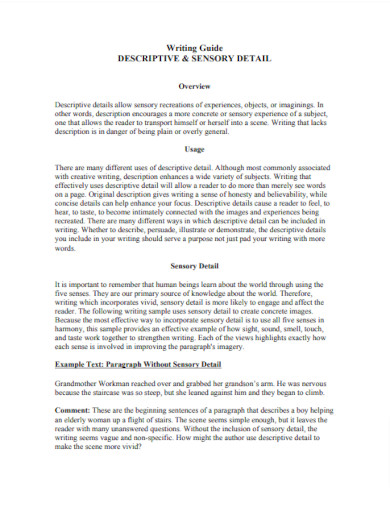
wright.edu
5. Sample Sensory Word List Example
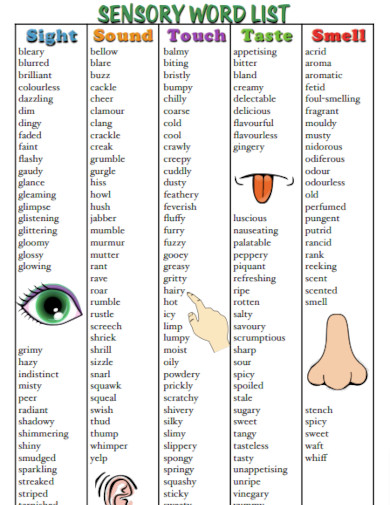
cpb-ap-se2.wpmucdn.com
6. Descriptive and Sensory Details Example
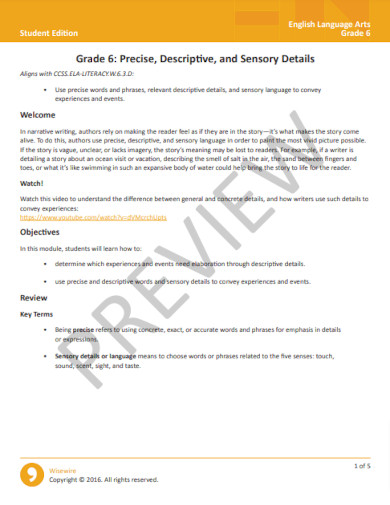
wisewire.com
7. Descriptive Writing Sensory Details

literacy.kent.edu
8. List of Sensory Words Example
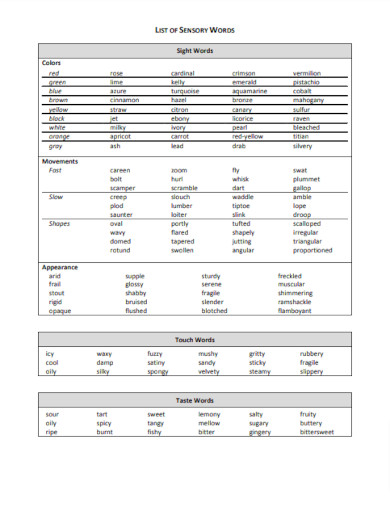
livingston.org
9. Basic Sensory Words Example
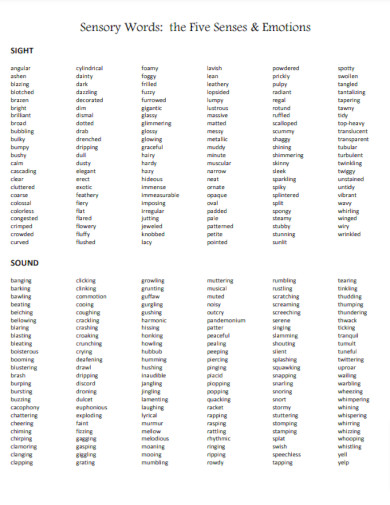
mrsmuellersworld.com
10. Sensory Details Writing Essentials
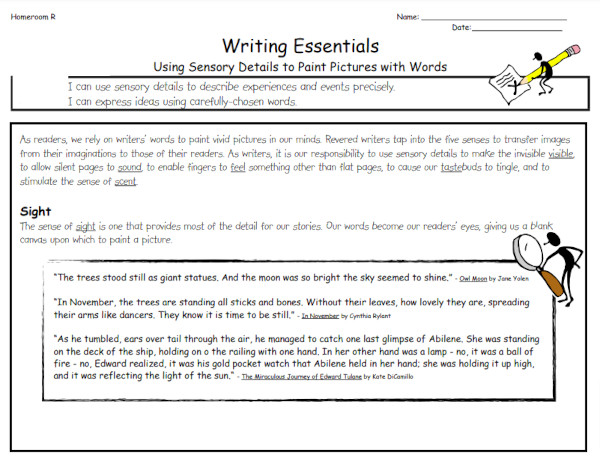
lrupp.edublogs.org
11. Using Sensory Details in Writing
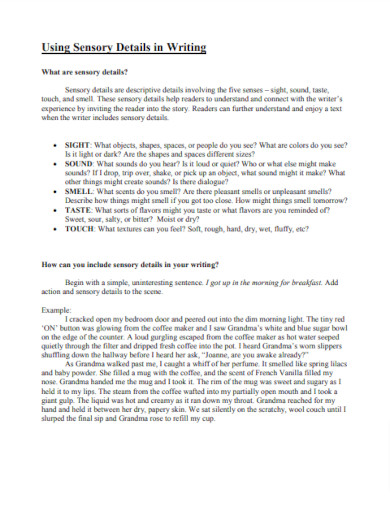
jdakephs.files.wordpress.com
12. Descriptive Sensory Writing Example
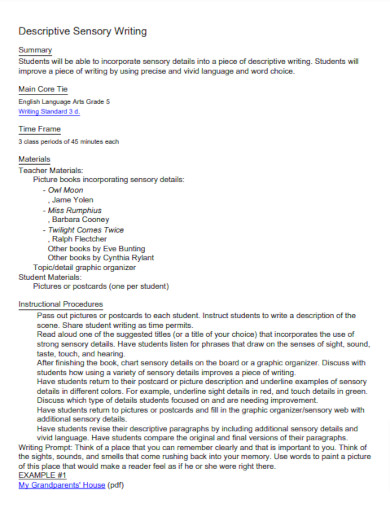
uen.org
13. Editable Sensory Writing Example
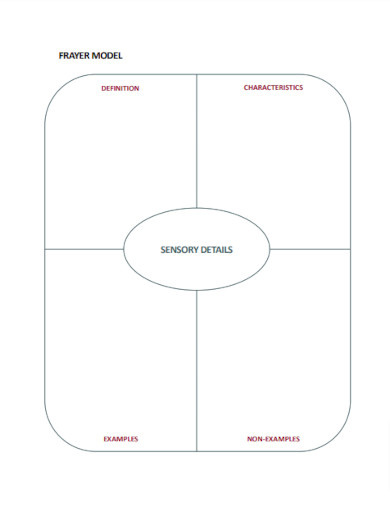
learn.k20center.ou.edu
14. Interpreting Sensory Details Lesson Plan

elacommoncorelessonplans.com
15. Using Sensory Details for Descriptive Writing
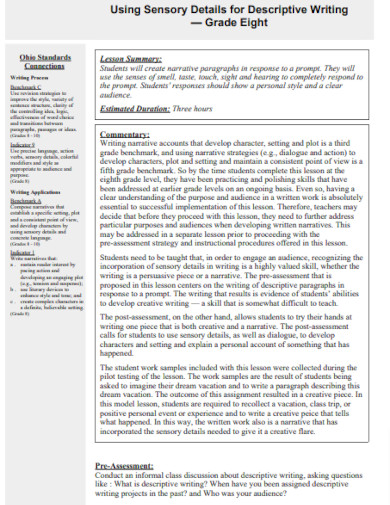
mrsgraysclassroom.org
16. Sensory Structure of the English Lexicon
escholarship.org
17. Sensory Analysis of Seafood Products

aboutseafood.com
What Are Sensory Details?
Sensory detail is a short phrase, simple sentence, statement, or word that will communicate specific details or descriptions in the context, tone, or theme of a single or a combination of senses. If you need sensory detail examples, samples, outlines, or outline formats, you can use the links in the sections above.
How to Write Sensory Details in One’s Text
Imagery is a literary device that allows the person to incorporate sensory details into one’s texts and help provide a salient image for the target market or audience to imagine. Often sensory details follow the basic five senses of the person, which are the sensation of tasting, touching, hearing, smelling, and seeing.
Step 1: Select the Sense You Want to Use
Begin by selecting the sense you want to write about. The sense you will utilize will determine the verbs, common nouns, and phrases you can use in the sentence.
Step 2: Obtain a Format for the Sentence You Want to Make
You must determine which sentence format you will use the sensory details with, as this will determine the overall length of the imagery. For example, you can use a compound sentence to describe a visual scene of a forest.
Step 3: Describe the Scene Using the Sense
After you have finished the steps above, you will now describe the scene you want to write out in your text. For example, I chose the visual scene of a forest with a simple sentence, which will result in “The meadow’s green grass swayed with a slow rhythm.”
Step 4: Repeat Step One to Three for Each Sense You Want to Use
When using imagery, it is important to keep in mind the various scenes you will write to illustrate a scene, which might require the writing of more than one sense. If you want to illustrate more sensory details, you can repeat steps one through three until you are satisfied with the result.
FAQs
Can I use sensory details in my poems?
Yes, one can use sensory details to help illustrate various emotions and scenes in one’s poems. Not only will this help improve the relatability of your work, but it will also enhance the quality and creativity of the poem.
When is the right time to use sensory details?
The best time to use sensory details is to either describe a specific scene for context or to elicit a specific image that one’s audience will use as imagery, One can use sensory details either creatively or objectively in one’s work to illustrate specific facts present in the scene.
Can I use sensory details in a speech?
Yes, you can use sensory details as a rhetorical device in one’s speech. This technique will help one’s audience imagine a specific scene you want them to relate to, which will help improve the empathy and understanding of the audience.
Sensory details are short sentences, phrases, or words a person can use to describe a scene or thing in the context of one’s senses. These details can use a single or a combination of one’s sentences and will help illustrate the scene. Good usage of sensory details will improve one’s text and speech.

